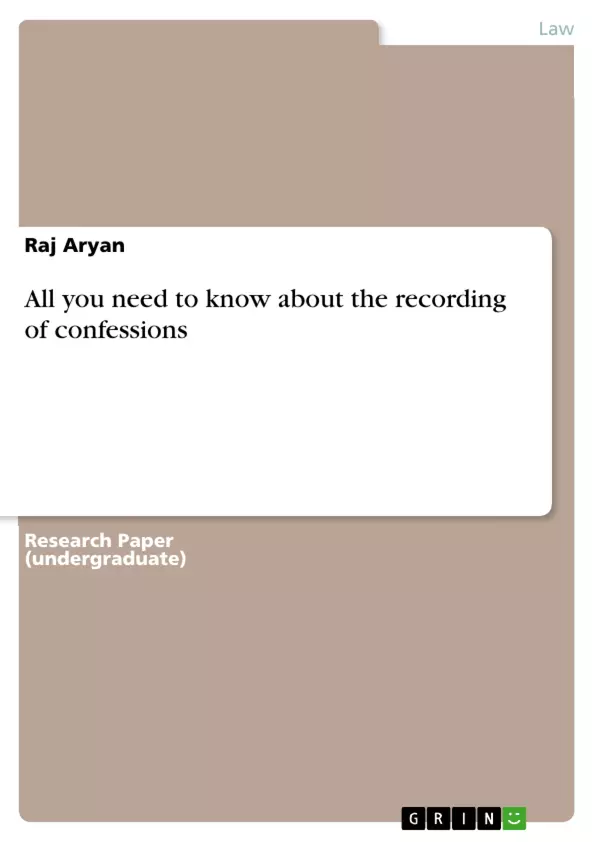This Article/Paper contains thorough analysis of confession being recorded in Indian Courts. It also contains examples and illustrations which is somewhat based on practical observations. To know more, you have to read it whole.
The term confession defined as a statement of a accused person in which he acknowledges that he is guilty of committing any crime or any illegal action. It is always preferable to distinguish a confession from any other kinds of self-incriminating actions. Since ancient time’s confession have been used as a evidence against criminal defendants.
Inhaltsverzeichnis (Table of Contents)
- INTRODUCTION
- Kinds of Confession
- Judicial confession
- Extra-Judicial Confession
- Retracted Confession
- Confession by co-accused
- PROCEDURE FOR RECORDING "CONFESSION" UNDER SECTION 1Cr.P.C.
Zielsetzung und Themenschwerpunkte (Objectives and Key Themes)
The purpose of this text is to provide a comprehensive understanding of the legal intricacies surrounding confessions in criminal proceedings, particularly within the Indian legal framework. It aims to clarify the different types of confessions, their legal implications, and the procedures involved in recording them.
- Confessions as evidence in criminal proceedings
- Types of confessions: judicial, extra-judicial, retracted, and by co-accused
- Legal requirements for recording confessions under Section 164 of the Cr.P.C.
- The role of voluntariness and the need for corroboration
- The significance of the Magistrate's role in recording confessions
Zusammenfassung der Kapitel (Chapter Summaries)
INTRODUCTION
This introductory chapter defines confession in the context of criminal law. It highlights the historical significance of confessions as evidence, referencing the Manu-smriti's emphasis on confession as a path to redemption. The chapter also explores the concept of voluntariness in confessions and outlines the two-prong test used to determine its validity.
Kinds of Confession
This chapter elaborates on the four main types of confessions: judicial, extra-judicial, retracted, and by co-accused. It delves into the legal nuances of each type, including their admissibility as evidence and the specific procedures involved. It also examines the historical context of extra-judicial confessions and the requirement for corroboration.
PROCEDURE FOR RECORDING "CONFESSION" UNDER SECTION 1Cr.P.C.
This chapter focuses on the legal framework for recording confessions under Section 164 of the Criminal Procedure Code (Cr.P.C). It outlines the procedural steps involved, including the role of the Magistrate, the need for voluntariness, and the importance of warnings to the accused. The chapter also discusses the impact of threats or inducements on the admissibility of confessions and the right of the accused to legal representation.
Schlüsselwörter (Keywords)
Key terms and topics central to this text include confession, criminal procedure, evidence law, Section 164 Cr.P.C., voluntariness, corroboration, Magistrate, judicial confession, extra-judicial confession, retracted confession, confession by co-accused, legal representation, and the Manu-smriti.
- Quote paper
- Raj Aryan (Author), 2019, All you need to know about the recording of confessions, Munich, GRIN Verlag, https://www.hausarbeiten.de/document/490870


